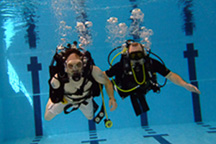Club Diving
Members of Southsea Sub-Aqua Club frequently dive along the South coast of England and have dived much of the rest of the UK and around the globe. The pages linked below provide some useful local information, as well as samples of what our members have done or are doing.
2. Launch Sites
- Details
- Category: Local Diving Information
Around the UK are many places where boats can be launched and recovered. Often these places are privately owned but there are many public sites too.
Below is a list of local launch sites that may be of use to you. In many cases, fees may be payable locally. It is possible that recent weather conditions may affect the launch site and some sites may not always be suitable in all conditions. Please check the suitability of the launch site for your own boats and what fees may be applicable for your boat. The sites below don't require you to join a local club, such as a yacht club. Most of the launch sites are accessible at all states of the tide. Many run over stones, so you would be advised to use a 4x4 vehicle that is suitably equipped for both launching and recovering the boat.
General advice on towing, launching and recovering RIBs for Divers
Stokes Bay, Hampshire - No2 Battery
Stokes Bay, Hampshire - GAFIRS
Eastney, Portsmouth, Hampshire
East Beach, Selsey, West Sussex
General advice on towing, launching and recovering RIBs for Divers
The video below was presented by Dave Pegler, an Advanced Instructor and First Class Diver, based in the Dorset area.
Useful links from the above video and a couple of others
Note: The law on towing changed after the above video was recorded, so please read up on what is current. Do check to see that this link is still current. The link below was correct in November 2021.
New rules for towing a trailer with a car from 16 December 2021
Planning - Risk Assessments by Dave Pegler (BSAC Membership required)
Safety on the boat (BSAC Website) (various links to useful pages)
BSAC Safe Diving Guide - Seamanship
Guidelines for the Safe Operation of Member Club Dive Boats
Lee-on-the-Solent, Hampshire
Until recently the slipway opposite what is now the Hovercraft Museum on the old HMS Daedalus site was fully open to boat launches. Recently a barrier has been erected and there is now a height limit. Also, the museum has been chartering more Hovercraft trips between Lee-on-the-Solent and Ryde on the Isle of Wight. It may still be possible to launch some RIBs from here, but the height limit (details to follow) may stop many club boats as the A-Frame may be too high.
At the time of writing, there is no fee for launching a RIB.
Stokes Bay, Hampshire
There are a couple of potential launch sites at Stokes Bay. If there is a large event happening then all the car parks can become full. Traffic can also become an issue and it has been known for Stokes Bay Road to become closed or restricted to one-way traffic.
The first is near to the Diving Museum. With a suitable 4x4 vehicle, it is possible to launch over the stones. The car park is Pay & Display. The public toilets are locked up in the evenings.
The better launch site is the concrete slipway beside GAFIRS. The suggestion is to prepare your boat prior to moving onto the slip, then keep your boat clear on the side where the Lifeboat Station is when you launch and later retrieve your boat. There is a good carpark at this site, with plenty of space providing that there is no local event happening. The parking is pay & display. The public toilets are locked up in the evenings.
Hardway Slipway, Gosport, Hampshire
Please remember to follow the Portsmouth Harbour small boats procedures and any other applicable procedures whilst within the harbour area. There are times when the entrance may be closed, such as when one of the carriers is moving in or out. It is highly recommended that you check for any shipping movements to ensure that these times do not interfere with your dive planning.
Gosport Public Slipway, Hardway Slipway - Bye-laws
Eastney, Portsmouth, Hampshire
Free parking is nearby. You must pay the local harbour fees for Langstone Harbour. These can be paid over the phone or in person.
Launching and recovery of the boat is done over the beach. Often the stones form a small mound that can make if “challenging” to get a boat & trailer over. Should this be a problem, then you can contact the local council to ask them to clear it. Typically this may take a few days to be done. It is highly recommended that you have some long strops to help recover your boat if it is heavy or you are likely to have issues moving on the beach.
Do observe the local speed limit whilst in the harbour area of 10kts. As you head out to the Solent, there is a speed limit sign on the end of a pier used by locals for fishing. After this point, you may increase your speed.
There are no public toilets available at the slipway. The nearest toilets are located either at a nearby restaurant, which is a short walk away or on the other side of the water behind The Ferry Boat Inn on Hayling Island. Should you need to use the toilets at the restaurant, please be respectful as they are not keen on lots of divers traipsing in wearing their diving suits. The toilets on Hayling Island are better and it isn't too difficult to get to from the slipway or the Hayling Ferry Jetty.
There is normally a good refreshments trailer located near the Lifeboat station where you can get hot food & drink.
Hayling Island, Hampshire
Whilst this is a public slipway, as with the Eastney Public slip you must pay the local harbour fees for Langstone Harbour. Nearby Public Parking is available, but charges do apply for around half the year. Check for any changes online, as like many others, Havant Borough Council have changed the policy in recent years and it may be only a matter of time before they may the charges applicable all year round.
The public toilets are normally well looked after. Food and drink are available in the popular Ferryboat Inn.
Whilst the slipway on Hayling Island is easier to launch and recover from, we typically prefer to use the one at Eastney as the parking is free.
East Whittering, West Sussex
Billy's on the Beach, Bracklesham Lane, Bracklesham Bay, Chichester, West Sussex PO20 8JH
Launching here is completed with the use of a tractor that will take the boat and trailer over the beach. There is a fee for this service. Although Southsea has used this in the past, we mostly launch either at Eastney or Selsey for wrecks in this area.
East Beach, Selsey, West Sussex
The route to the slipway starts at the far side of the public car park. The slipway is built from wooden cross-beams that are weathered. As a result, it is slippery when wet. The design is such that it also gets steeper towards the end, making it challenging for those who are familiar with reversing a trailer. It is recommended that you have some chocks to stop the vehicle from sliding down the slip and also some long strops to help recover the boat & trailer.
Caution: There have been a few incidents where people have had their boat, trailer or car fall off the slipway in poor conditions. The RNLI has been called out to assist. If it's too slippery, use the chocks and strops.
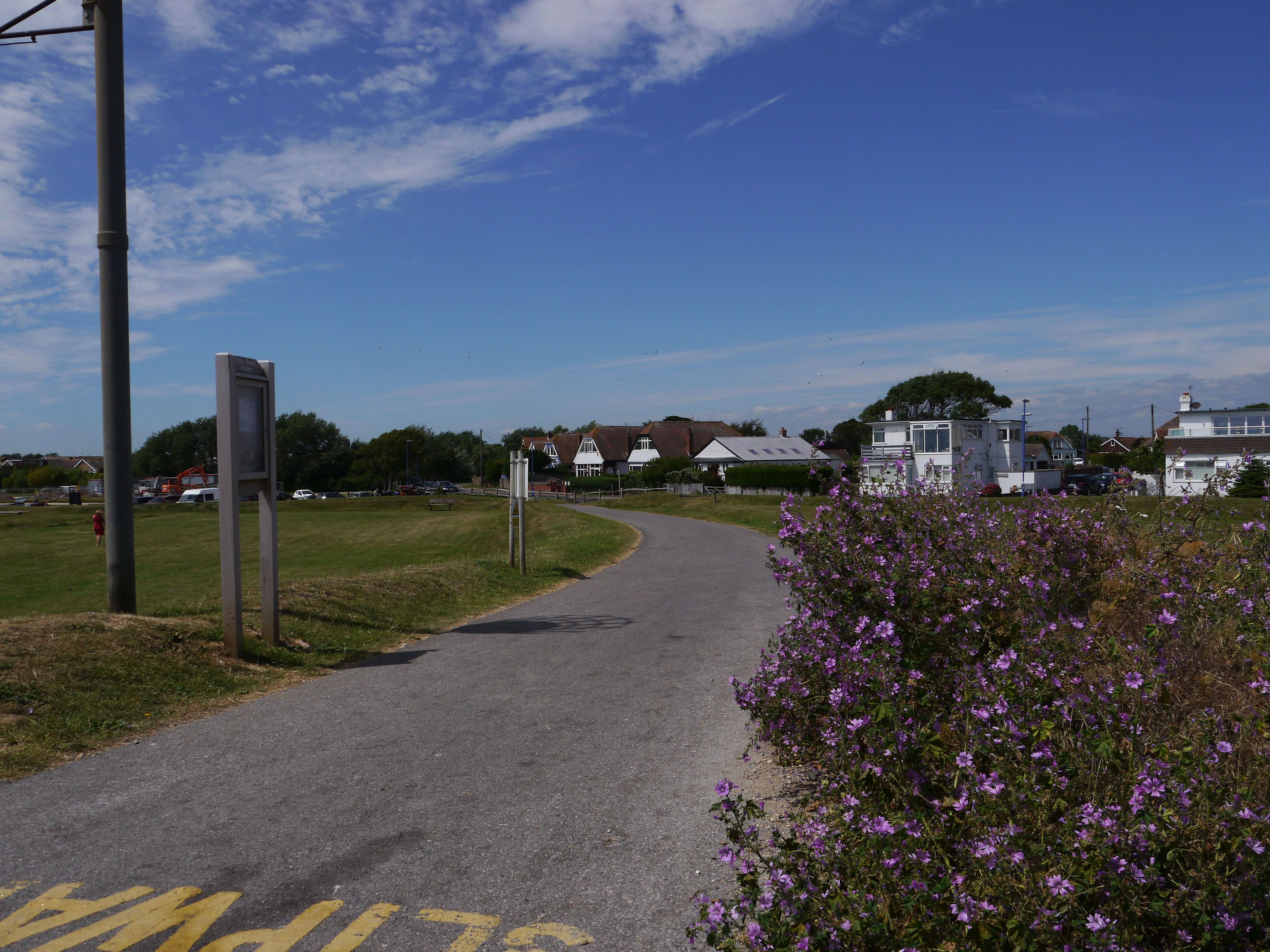
Note: There is a turning point hidden behind the bushes in the image above.
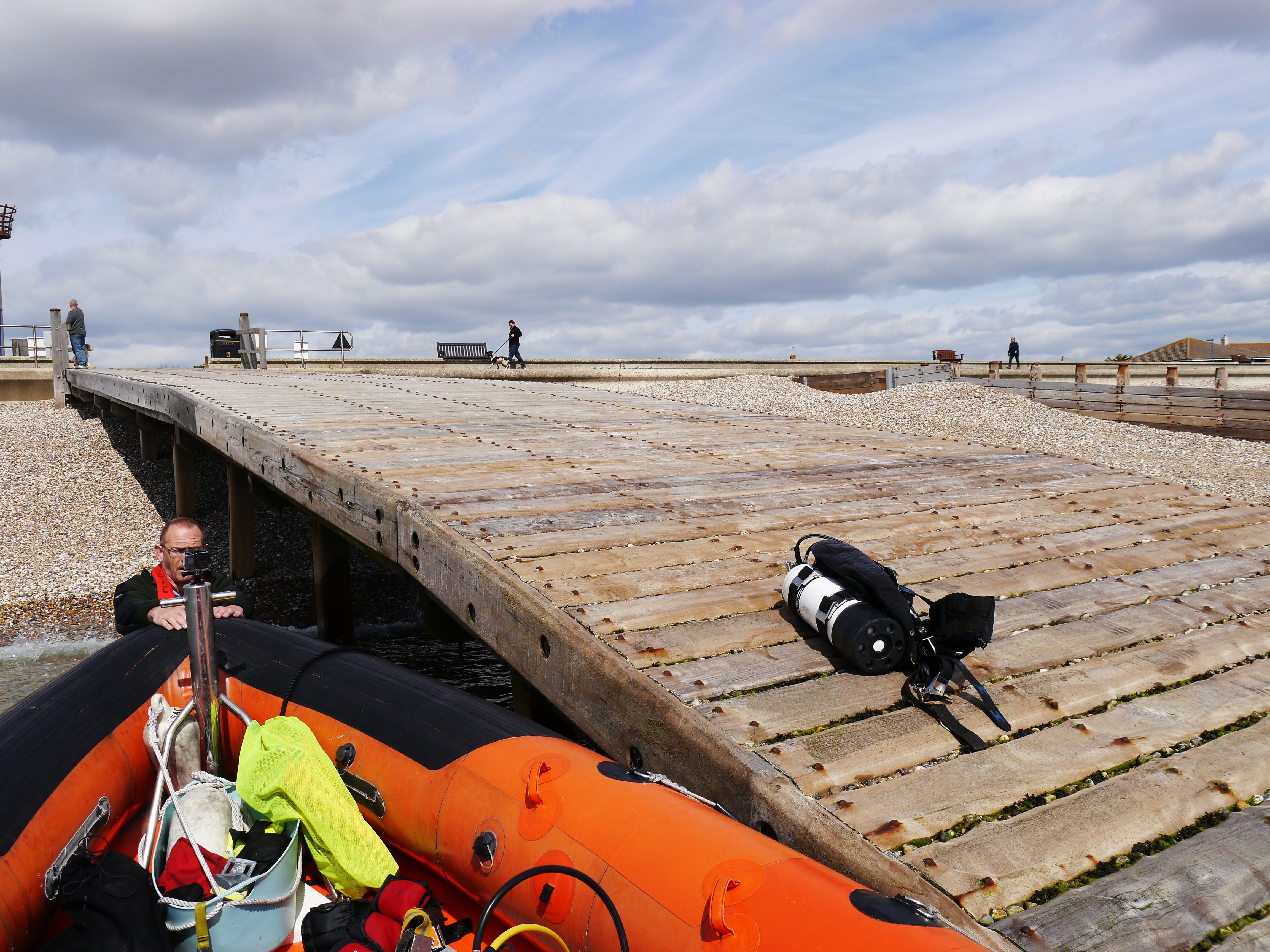
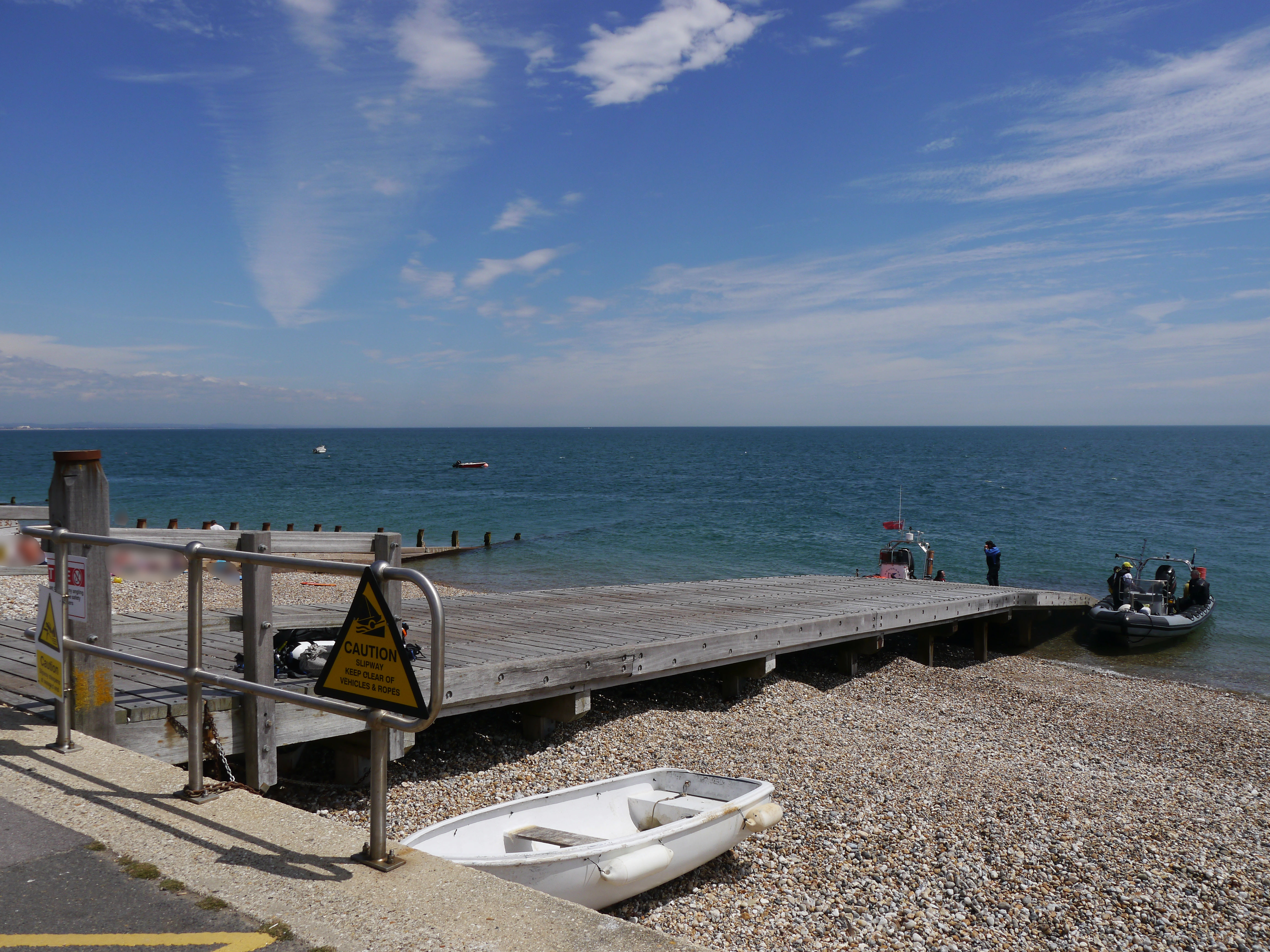
Note: In this third image you can see the general shape of the slipway. The water was approaching high water when the photo was taken. It gets steeper further down. The slipway does not extend into the sea at low water, so you may find yourself on the beach when launching or recovering at these times.
The height barrier to the public car park opens around 6am and closes at 9pm. The gatekeeper lives locally, so may see you if you arrive a little early. Do thank him for his troubles. Outside of these times, cars can get in or out, but not a RHIB and its A-frame or camper van.
Remember to pay and display before you head off to your dive site. The parking here is cheap for all-day parking. 1st April 2019 - 31st October 2019 the charges are 30pfor up to 1 hour, then £1.60 for over one hour. The charges are applicable every day of the week, including bank holiday
There are public toilets and a friendly cafe at the farther end of the car park to the public slip. If you need gas or dive gear, Mulberry Divers aren’t too far away either. It is possible to walk to them, but for getting a fill, it may be better to take the car.
The picture below was taken between dives as members who had dived the earlier dive were removing their empty cylinders and others for the second dive were putting their sets aboard.
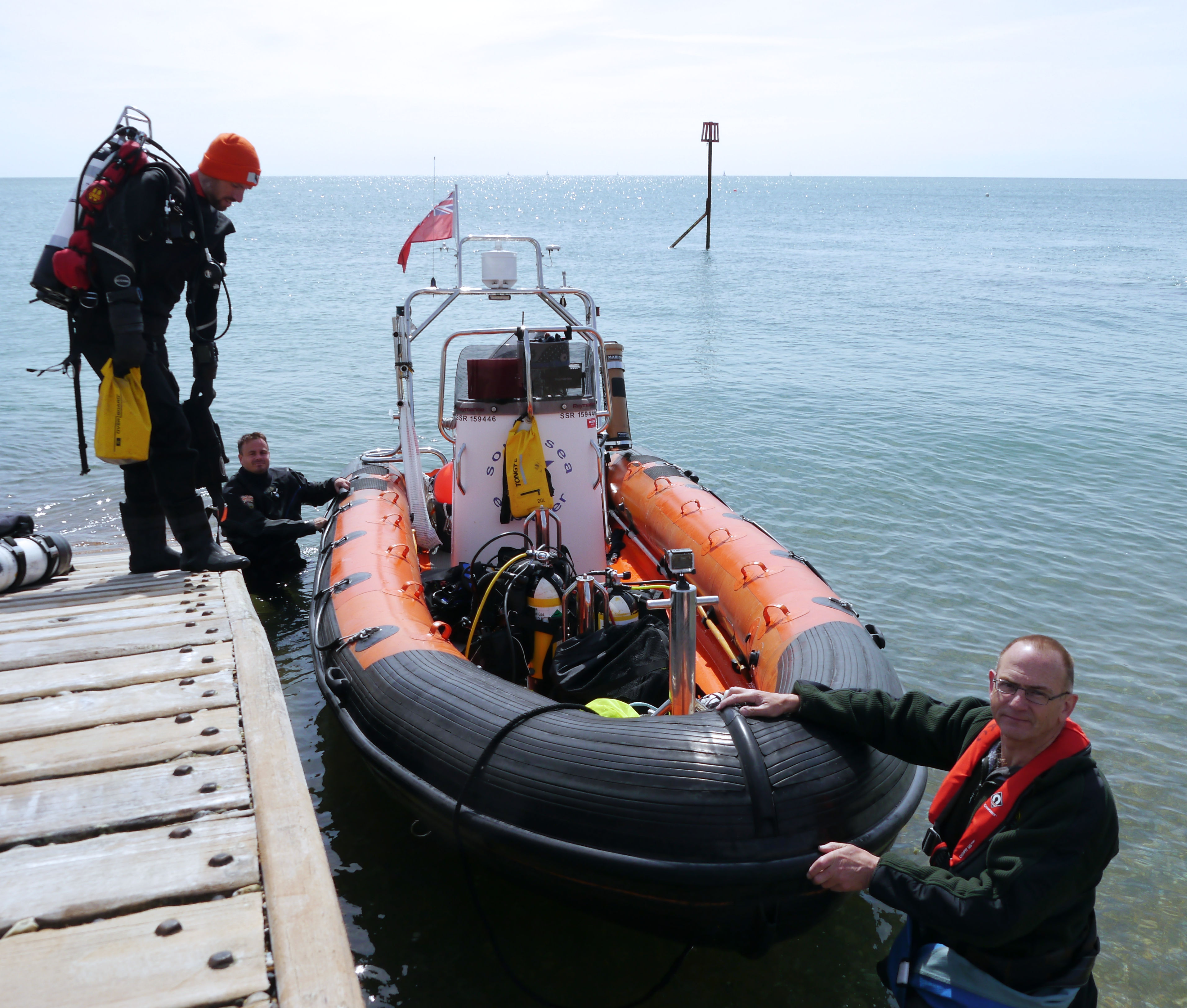
Littlehampton, West Sussex
The public slipway at Littlehampton is off the estuary. Parking is available and harbour dues are required.
Parking for both the trailer and cars is nearby. There are also rules to be obeyed whilst in the harbour. All the necessary information, with various links, is available on the page linked below.
Littlehampton Public Slipway information
Disclaimer
Whilst we have done our best to provide good and useful information on this page, things can and will change periodically that are out of the control of SSAC. Please do not blindly rely on the information on this page and double-check that the information is still current.
July 2019: This page is currently being built. Some information may be incomplete. Where possible photos may be added too.
November 2021: This page continues to be revised periodically. More photos will be added in due course to help illustrate some of the slipways.
![]() Return to the Local Diving info page...
Return to the Local Diving info page...
1. Boat Charters
- Details
- Category: Local Diving Information
Diving around the UK can be a great experience. There are many shore dives available and even more sites of interest that are far enough away from the coast to require a boat to take us there and bring us back safely. Boats are expensive to own and operate and many people operate commercially so that people can go diving. The list below is not an endorsement by Southsea Sub-Aqua Club. It is intended to help other divers find boats that can be chartered or where spaces are available to go diving in the local area.
Lymington, Hampshire
Brighton, East Sussex
Weymouth, Dorset
Portland, Dorset
Skin Deeper & Portland gas shack
Isle of Wight
Wight Dolphins (BSAC Branch 807)
Whilst, not a commercial outfit, Wight Dolphins have been known to take visiting divers out on club trips. Please do contact them first.
Mini-documentary about the Mulberry Harbours #1
- Details
- Category: Mulberry 70
The video below, created by Forces TV, gives an overview to the Mulberry Harbours and their significance to the whole of the landings in Normandy in 1944.
Ship Rock, Selsey - Final Report
- Details
- Category: Ship Rock, Selsey
With the support of a grant from the British Sub-Aqua Jubilee Trust members of SSAC have conducted a number of dives on both sites to learn more about these wooden vessels, their construction and cargo in an attempt to find out more about their voyage and their loss.
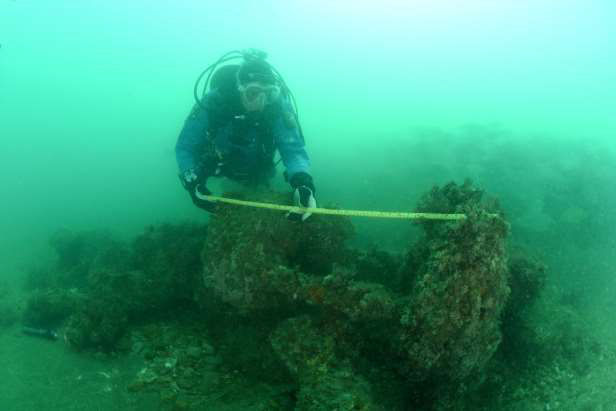
Click here to download the final report ![]()
No Roses on a Sailor's Grave on The One Show
- Details
- Category: No Roses on a Sailor's Grave
John Henry Phillips & Patrick Thomas appeared on BBC One's The One Show on 24th April 2019. During which it was confirmed on the BBC One Show that the documentary would be shown in the Autumn.
The One Show Wednesday 24th April 2019 episode (note: this will only be available for a few weeks after airing).
Alternatively, you can watch it here:
Local Diving Information
- Details
- Category: Club Diving
![]()
Over the years our club has used a variety of local facilities to help us go diving. There are also a variety of different dive sites available to meet the needs of divers with a wide range of experience and interests.
- Boat Charters
- Launch sites
- Dive Shops (Gas & Gear)
- Inland diving
- Shore Dives
- Boat Dives
- Charts, tides & weather
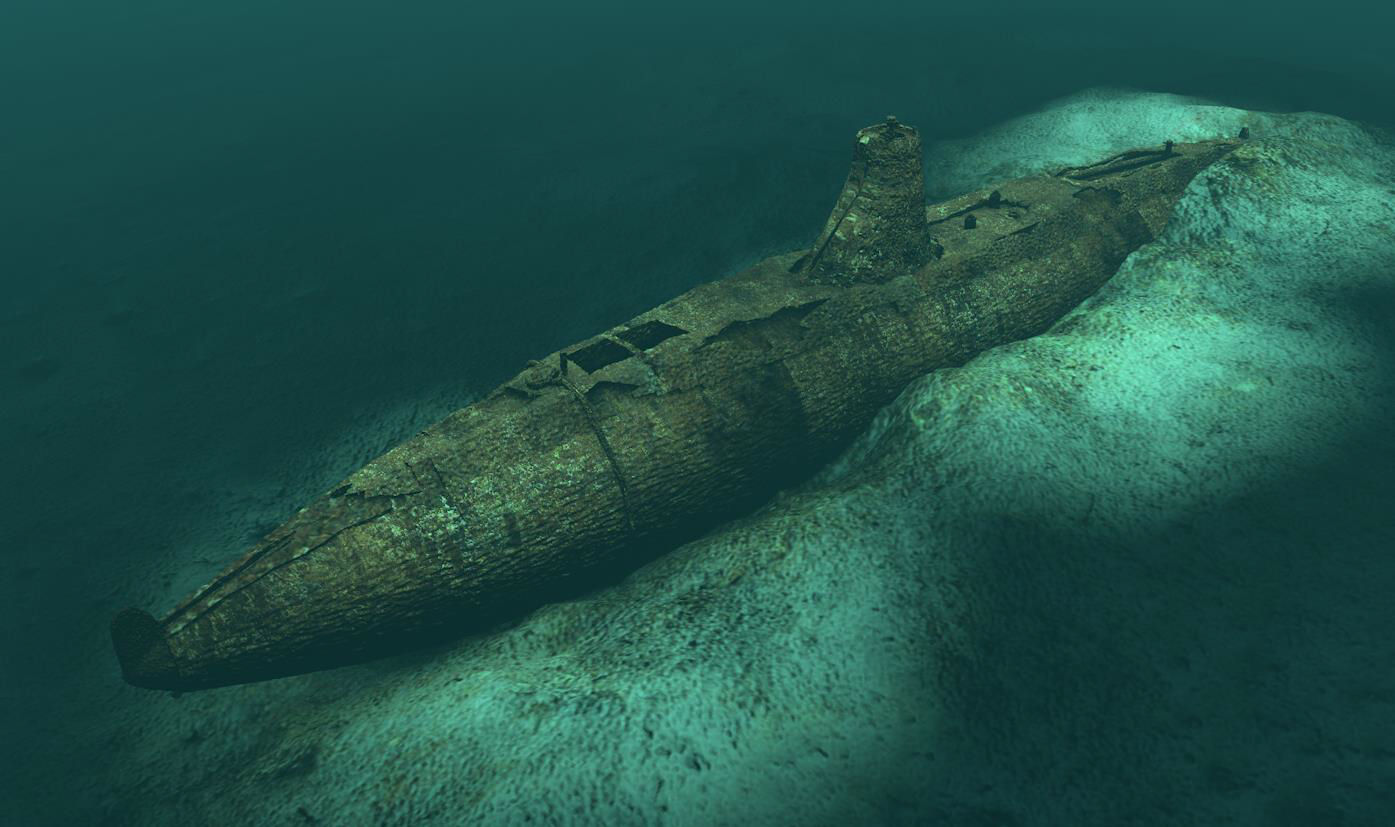
We are lucky to be located in the middle of the south coast. The local area offers the possibility of a range of diving from shallow easy dives for a trainee diver, to deeper, more challenging dives for the experienced mixed gas diver. The sites are often based around a wreck, with a few gullies or reefs too. The wrecks include a wide range of crafts. They are not limited to just shipwrecks from both wars, even if these are the more common. We have a range of historic sites including the Mulberry Harbours, Tanks & Bulldozers, aircraft, and submarines. There are a few protected sites too, such as the HMS A1, HMS Invincible & Thorness Bay protected wrecks which are diveable with the permission of the respective Licensees.
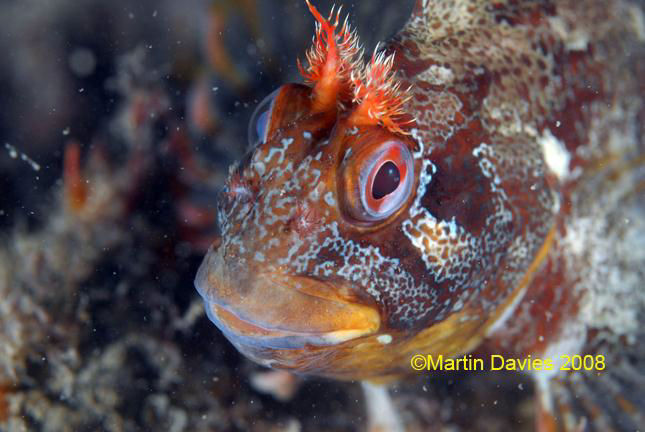
Sealife varies from season to season. It includes things such as sponges, pink fan coral, Pollack, blennies, pipefish, common starfish, painted top shells, whelks, mussels, oysters, scallops, cuttlefish, dogfish, wrasse, a variety of crabs, lobsters, eels, rays and many flatfish. If you are lucky, then you may be accompanied by a pod of dolphins on your way to the dive site!
Picking the right conditions can be tricky. The Solent Ooze covers some areas and can contribute to the debris floating in the water column. It isn’t helpful when the dredgers are busy improving the local harbours which would otherwise silt up. There are a couple of dumping grounds, the most popular being just south of the Nab Tower to the east of the shipping channel on the east side of the Isle of Wight.
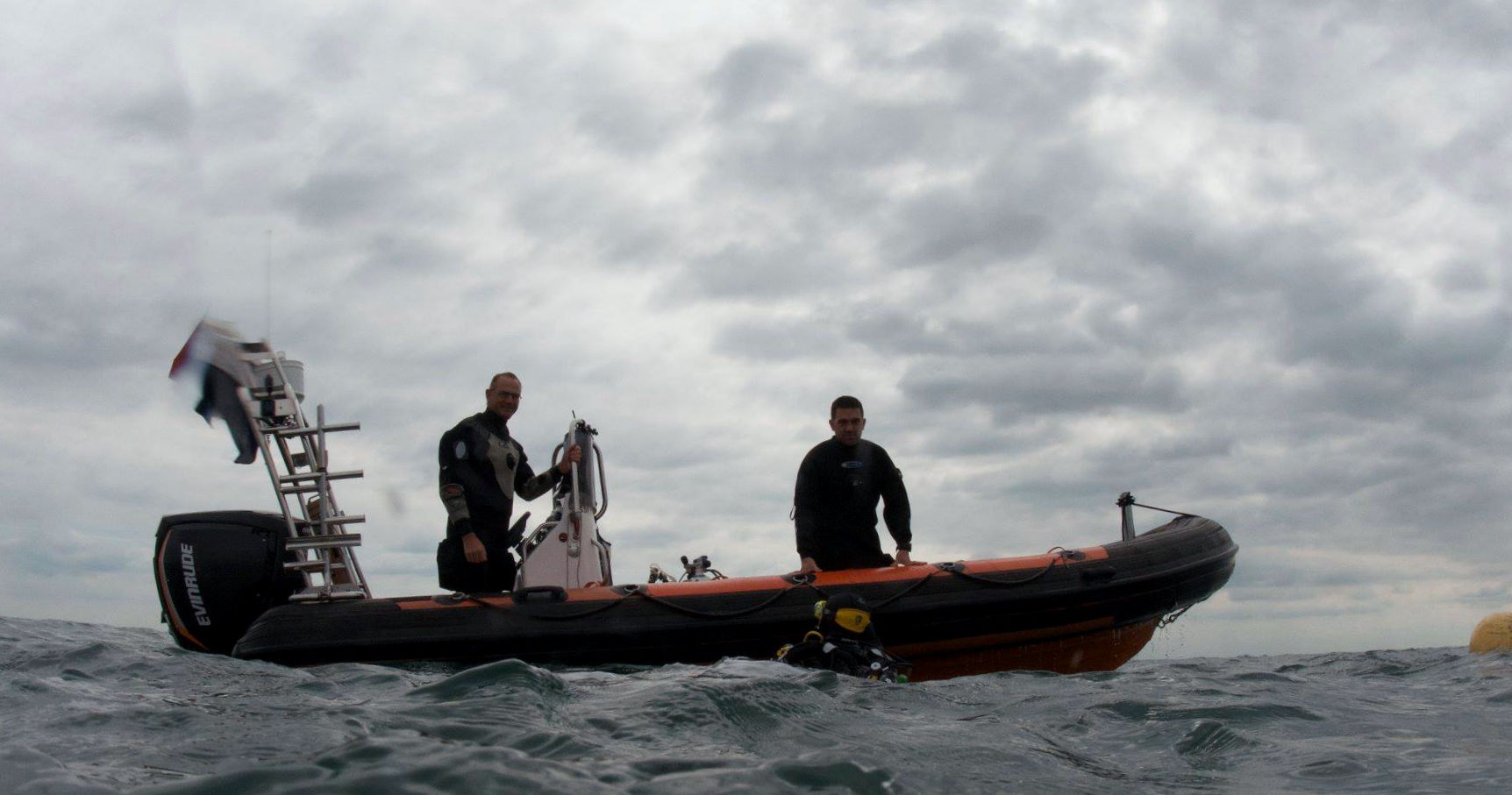
The local tidal forces are unique. The Isle of Wight has an effect and when the conditions are right, you can get a double high tide. This can make planning slack water “interesting” at times. Some areas are better dived at low water slack, whilst a few are better dived at high water slack. There are a handful of drift dives, but most diving is best completed on slack water.
Guides such as “Dive Isle of Wight and Hampshire” or “Dive Sussex” are useful for identifying many of the local dive sites. They haven’t been updated for a few years and there are several errors in many of the listed sites as a result of time and more up to date information becoming available. For more accurate GPS marks, it can be better to use the website https://www.wrecksite.eu/ .
** Under development **
July 2019: This section is currently being built. Some information may be incomplete. Where possible photos may be added too.
Neptune Wrecks - Final Report
- Details
- Category: Neptune Wrecks
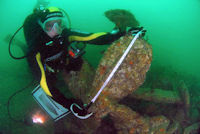
Following our successful Tanks and Bulldozers project our research into the formerly Top Secret Operation Neptune war diaries and archive files revealed the story behind their sinking. The tanks and bulldozers had been lost from a British Landing Craft Tank (LCT(A) 2428), when she capsized whilst under tow on the morning of 6th June 1944. LCT(A) 2428 had been assigned to ‘J’ Force as part of the Canadian lead assault of Juno beach and had British Royal Marines and Canadian troops onboard. All onboard were rescued and returned safely to Portsmouth. LCT(A) 2428 did not sink immediately after the capsize, but had floated on for some time before finally being sunk by gunfire from the Rescue Tug ‘Jaunty’.
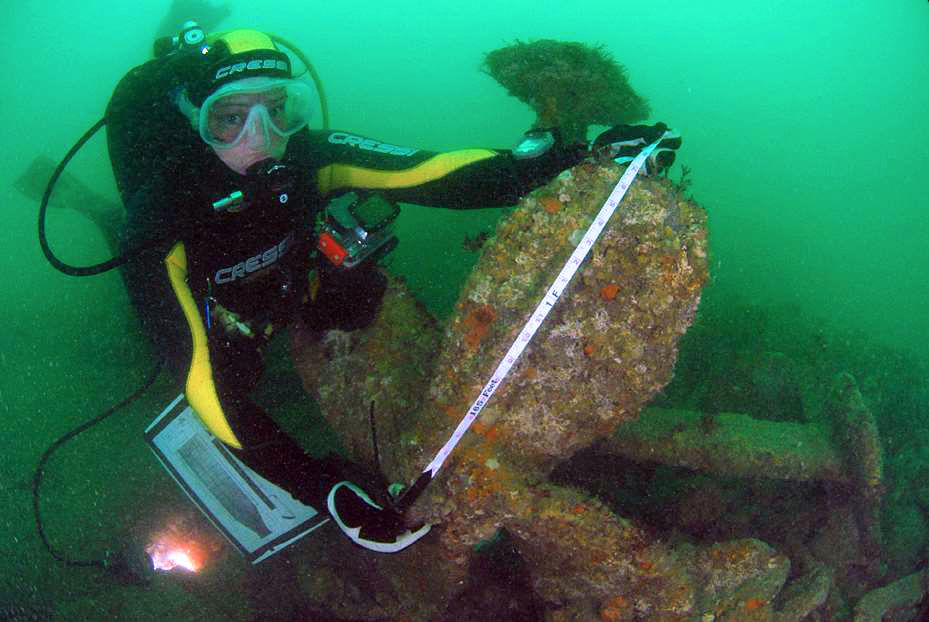
This project should, therefore, could be considered an extension to the original Tanks and Bulldozers Project as it seeks to complete the historical record and documents the wrecks as they are today. An update to the initial Tanks and Bulldozers report was produced in 2009 and is attached for reference and as a bridge between the two survey projects. In addition, this report also gives an opportunity to provide details on the further exciting developments of the work previously carried out in 2008 as detailed in the initial Tanks and Bulldozers report of October 2008.
In working to locate possible wreck sites in the area for the LCT(A) 2428, Branch members became aware of a number of other unidentified wrecks which also appeared to have a connection with Operation “NEPTUNE”. Operation Neptune was the code - name given to the Maritime phase of Operation “OVERLORD” (The invasion of Normandy by sea and the liberation of France).
Rather than limit the project to one wreck site, the Branch set about investigating a number of wrecks all of which were believed to have a connection to Operation NEPTUNE and these follow-on investigations could be the start of a longer-term project to record many wrecks which were associated with Operation NEPTUNE in the area.
The sites included in this report are:
- UKHO 20004 – known locally as the ‘Patch’ Landing Craft Tank.
- UKHO 20244 – Barge.
- UKHO 20009 – Barge.
- UKHO 19117 – Landing Craft Tank.
- UKHO 20008 – Tanks & Bulldozers.
- Uncharted WW2 Valentine DD tank.
Tanks & Bulldozers - Final report
- Details
- Category: Tanks & Bulldozers Project
The Southsea Sub-Aqua Club Tanks & Bulldozers survey project far exceeded the aims of the project in many respects. What started off as an ambitious Branch and personal challenge has struck a chord with many in the diving community and beyond, bringing the activities of the Branch and the mystery that surrounded the site into the public domain.
With the support of many, the mystery of how 2 tanks, 2 bulldozers and a gun came to rest 8 miles south of Bracklesham, West Sussex has at last been solved.
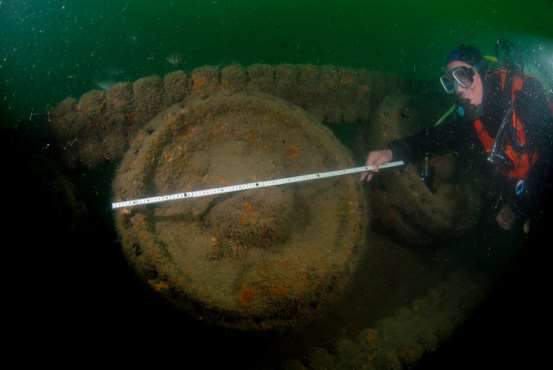
![]() Download the Final report here.
Download the Final report here.
LCT 427 Memorial Ceremony News coverage
- Details
- Category: Kedge Hook HM LCT 427
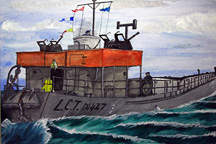
As a part of the memorial service for LCT 427, ITV, BBC reporters and The News, were present to record the events of the day.
You can see and read their coverage below.
For more details of this site, including reports and more articles, please see: Kedge Hook HM LCT 427
Article posted on "The News", Portsmouth's local news paper:
Article posted on the BBC Website regarding the memorial service:
Club Year Planner & Calendar
- Details
- Category: Club Diving
Each year the club's Diving Officer invites members to help arrange the diving calendar for the upcoming year. From there a plan is formulated for some club dives and training courses. There are also some non-club events included which may be relevant to club members, such as dive shows and NAS dives and courses.
The calendar below lists many of the club's planned dives and events. We've chosen not to post all our club meetings as these are held every week. We meet at Tudor Sailing Club every Thursday between 7.30pm and 11pm, except for Bank Holidays and a few days around Christmas and the New Year.
Click here for more details of where & when we meet
The organised events have been added to the calendar. Club members should feel welcome to browse through the calendar to see what is on offer. It is possible to add these events to your own Google Calendar. If you have another electronic calendar, it may be possible to link the events to yours.
Events listed in the calendar are subject to change. Any changes will be notified in the normal manner through club notices.
Subcategories
Local Diving Information
![]()
Over the years our club has used a variety of local facilities to help us go diving. There are also a variety of different dive sites available to meet the needs of divers with a wide range of experience and interests.
- Boat Charters
- Launch sites
- Dive Shops (Gas & Gear)
- Inland diving
- Shore Dives
- Boat Dives
- Charts, tides & weather

We are lucky to be located in the middle of the south coast. The local area offers the possibility of a range of diving from shallow easy dives for a trainee diver, to deeper, more challenging dives for the experienced mixed gas diver. The sites are often based around a wreck, with a few gullies or reefs too. The wrecks include a wide range of crafts. They are not limited to just shipwrecks from both wars, even if these are the more common. We have a range of historic sites including the Mulberry Harbours, Tanks & Bulldozers, aircraft, and submarines. There are a few protected sites too, such as the HMS A1, HMS Invincible & Thorness Bay protected wrecks which are diveable with the permission of the respective Licensees.

Sealife varies from season to season. It includes things such as sponges, pink fan coral, Pollack, blennies, pipefish, common starfish, painted top shells, whelks, mussels, oysters, scallops, cuttlefish, dogfish, wrasse, a variety of crabs, lobsters, eels, rays and many flatfish. If you are lucky, then you may be accompanied by a pod of dolphins on your way to the dive site!
Picking the right conditions can be tricky. The Solent Ooze covers some areas and can contribute to the debris floating in the water column. It isn’t helpful when the dredgers are busy improving the local harbours which would otherwise silt up. There are a couple of dumping grounds, the most popular being just south of the Nab Tower to the east of the shipping channel on the east side of the Isle of Wight.

The local tidal forces are unique. The Isle of Wight has an effect and when the conditions are right, you can get a double high tide. This can make planning slack water “interesting” at times. Some areas are better dived at low water slack, whilst a few are better dived at high water slack. There are a handful of drift dives, but most diving is best completed on slack water.
Guides such as “Dive Isle of Wight and Hampshire” or “Dive Sussex” are useful for identifying many of the local dive sites. They haven’t been updated for a few years and there are several errors in many of the listed sites as a result of time and more up to date information becoming available. For more accurate GPS marks, it can be better to use the website https://www.wrecksite.eu/ .
![]() Return to the Local Diving info page...
Return to the Local Diving info page...
Trip Reports

Members of Southsea Sub-Aqua Club often plan a weekend, long weekend, week or longer trips together to a variety of places either in the UK or abroad. Sometimes a member of the group will put together a diary or report and illustrate it with some images of the holiday. Often too they'll include a little humour as well. Below are some diaries and reports of what they got up to on a few of the trips. Many are holidays and a few are about the expeditions or projects which members have been involved with too.
Diving Projects
Britain has relied upon the seas surrounding her for many millennia. Whether it has been for fishing, the import and export of goods, travelling and exploration or for protecting her shores from potential invaders. Occasionally a craft has failed to complete its journey and has sunk below the waves, leaving a wreck. More often this has been caused by a storm at sea, but can also have been caused by an accident (i.e. collision), navigational error or through warfare.
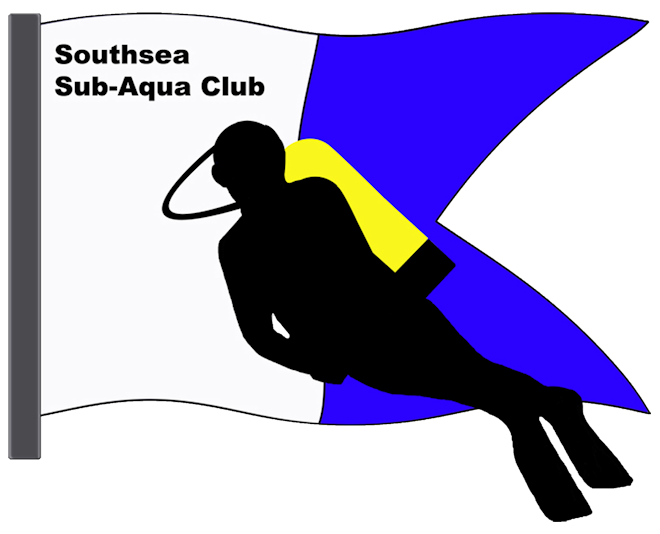
Southsea Sub-Aqua Club has a long history of wreck site investigation, the most well-known being "Project Solent Ships" which directly led to the discovery of the Mary Rose, but we didn't stop there. Over the years the Club has developed an association with a number of local wreck sites and some off the Normandy coast.
The projects involve a number of different types and ages of wrecks. They include ships, landing craft, aeroplanes, Mulberry harbours, armoured bulldozers and tanks from the two World Wars, as well as older wrecks, much older.
Today there are various courses available to help divers to record the sites and various members have completed such courses. They may have been completed within the club or through other organisations, such as the Nautical Archeology Society (NAS) or a University.

Some techniques have changed over the years as new technologies have become available. Where once an accurate sketch may have been sufficient, today you'll often find people still using tape measures and underwater slates, but also you'll find some using underwater cameras to help produce stills, video and 3D images. Often local and national news services have become interested in the stories of the projects too.
The articles below provide links to the various projects. They include photos and drawings of the sites, a record of the kind of life observed by the teams as well as some history to help bring them back to life.



